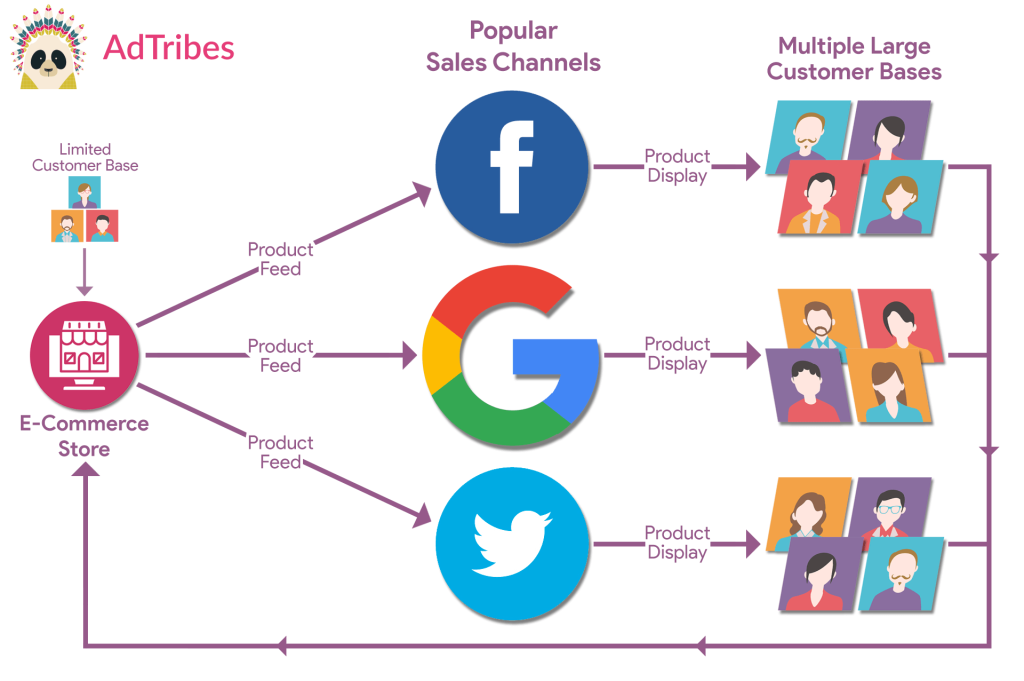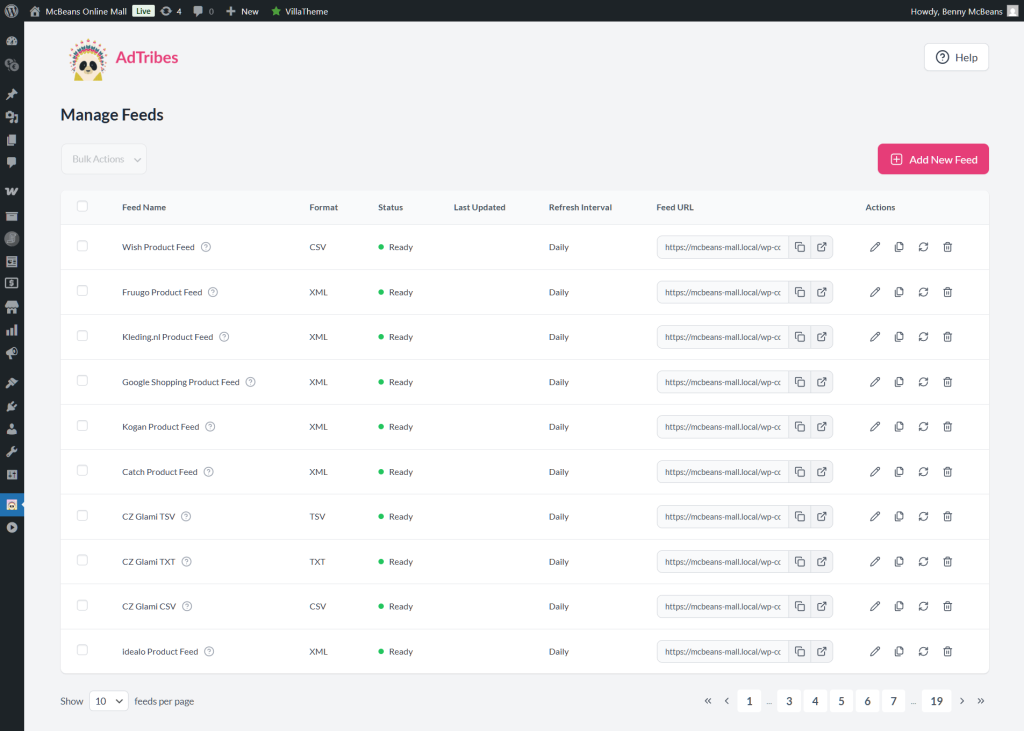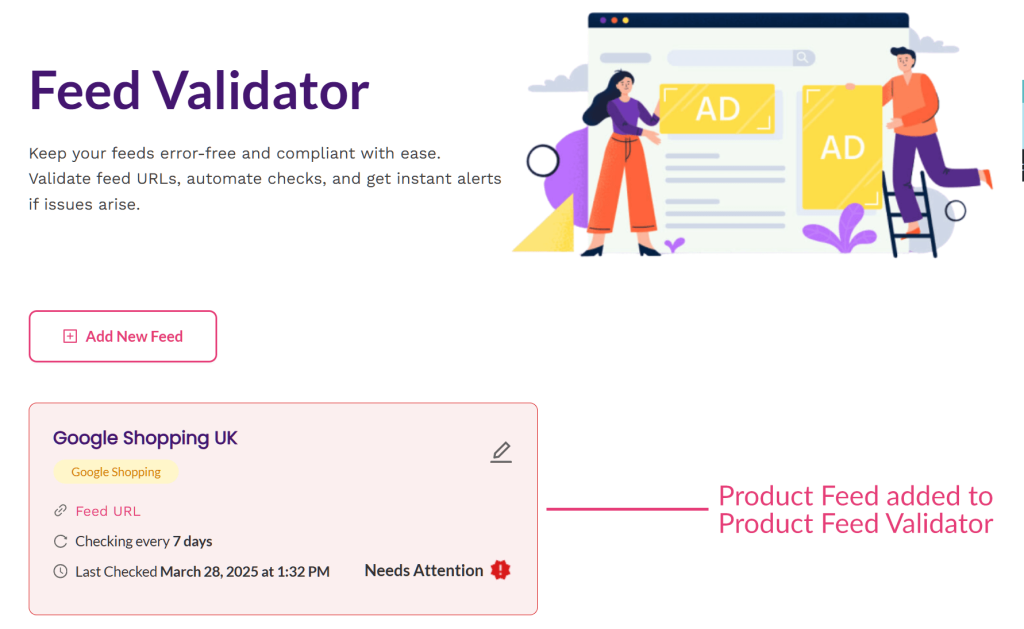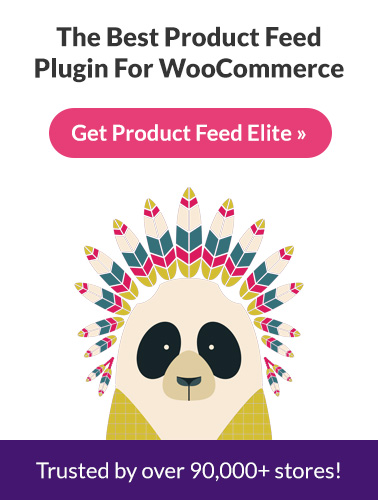
Your store’s growing, but so is the clutter. Too many products, too little structure, and your customers feel it. That’s where product curation can help.
With product curation, you can take control of your catalog and help shoppers find exactly what they want. The result? A smoother, more confident shopping experience and a better chance to sell more.
In this article, we’ll break down how product curation works, why it matters, and how to do it well. We’ll also show how product feeds can make the whole process faster and smarter.
- I. What Is Product Curation?
- II. Why Curation Matters Now More Than Ever
- III. The Wrong And Right Ways To Curate Products
- IV. How Product Feeds Help With Product Curation
- Conclusion
I. What Is Product Curation?
Product curation is the process of carefully selecting a smaller group of products from a much larger collection. Instead of showing everything a store sells, it highlights only the items that match a certain purpose, theme, or style.
Unlike a traditional catalog that shows everything in stock, curated collections are more thoughtful. They often center around a specific theme, style, or need.
Imagine an online store that sells hundreds of different sneakers. Instead of showing every single pair, product curation might create a special collection of the best running shoes for beginners. This way, someone new to running can quickly find what they need without getting lost in endless options.
Here are a few more examples of curated products
- Curated gift boxes: Gift boxes often include a small group of handpicked items that work well together. This saves people from guessing what goes with what and makes gifting easier.
- Snack or grocery boxes: Some food stores offer weekly or monthly boxes filled with trending snacks, meals, or groceries. These boxes let customers try new things without having to hunt for each product.
- Expert-led picks: Many stores now offer collections based on expert advice. Examples include financial tools picked by finance coaches or skincare kits recommended by dermatologists.
- Classroom or educational bundles: Teachers and parents can buy ready-made kits filled with supplies or learning tools for specific grade levels. These bundles cut out the need to search for individual items one by one.

II. Why Curation Matters Now More Than Ever
The number of products available online has exploded in recent years. This flood of choices can leave shoppers feeling lost, unsure where to start or what to pick.
For these reasons, product curation is more important now than ever before.
Here’s why product curation matters today:
1. Too many choices confuse people
When shoppers face too many options, making a choice becomes difficult. This overload can lead to hesitation or picking a product that doesn’t match what they’re actually looking for.
Thankfully, product curation simplifies this by narrowing down the selection, which helps shoppers focus on the items that truly fit their interests or needs. This way, they spend less time sorting through everything and more time finding what works best.
2. Reduces overwhelm for buyers and sellers
Curating products helps stores stay organized by highlighting the most relevant products. In other words, sellers don’t need to promote every item all the time, which makes it easier to manage inventory and marketing efforts.
At the same time, buyers can concentrate on a smaller set of options that suit their needs. This reduces confusion and makes the shopping experience smoother for both sides.
3. Shoppers trust recommendations
People trust recommendations because they help cut through the clutter. A thoughtfully chosen, curated product selection feels personal and lowers the chance of making a bad purchase.
It’s like getting advice from a friend who points you to the few options that really matter, so you don’t have to sift through a mountain of choices. Shoppers are more likely to buy when someone else has already picked the best products for them.
4. Shows relevant products for a better experience
Curation isn’t just about limiting the number of products. It’s about selecting items that match the shopper’s interests, preferences, or current goals.
When the options feel relevant, shoppers spend less time searching and are more likely to find something that fits.
5. Good curation saves time
Good curation saves time by removing products that don’t fit the shopper’s needs. It narrows the selection to items that are more likely to match what they’re looking for.
This shortens the time spent comparing options and makes decision-making more efficient.
6. Highlights products customers might miss
Thoughtful curation draws attention to items that may not stand out on their own in a large catalog. It gives visibility to products that match customer interests but might be overlooked due to the volume of listings.
This can lead to more balanced sales across the catalog and better use of inventory.
7. Adapts quickly to trends and seasons
Curating products makes it easier for stores to adjust their selection when customer preferences change. Items can be replaced or updated based on current trends or seasonal demand.
This keeps the catalog fresh and aligned with what shoppers are most likely to buy at a given time.
8. Defines the store’s identity and style
Curated selections help shape a store’s overall look and message. When the product mix is consistent in style, quality, or purpose, it gives shoppers a clear sense of what the store stands for.
This can make the store more recognizable and appealing to specific types of customers.
9. Helps target merchandising across sales channels
Curating the right products allows stores to focus on what performs best on each sales channel. Instead of promoting everything, they can choose items that match the audience or format of each platform.
This leads to more efficient campaigns and better results.
10. It builds loyalty when done right
Curation helps stores consistently offer products that match customer expectations. When shoppers find relevant and reliable options each time, they’re more likely to return.
Over time, this consistent experience encourages repeat visits and builds trust in the brand.

The right product curation keeps shopping simple and builds stronger connections with customers. It turns a flood of options into a clear stream.
III. The Wrong And Right Ways To Curate Products
Curating products plays a big role in shaping how people shop today. When done well, it helps shoppers find what they need quickly.
However, good curation needs more than just picking items. It requires clear thinking about what fits together and why. If not handled carefully, curation can miss the mark and make the selection feel random or confusing.
❌️ Curating products the wrong way
Let’s look at some common mistakes stores make when curating products:
- Thrown-together product lists: Sometimes stores just group items without a clear theme. The result feels messy and unhelpful.
- No clear audience in mind: Curations should serve a purpose. If the store doesn’t know who the selection is for, shoppers won’t see the value.
- Outdated or broken links: When links lead to sold-out or missing pages, it breaks the shopper’s trust. People are less likely to come back.
- Products that don’t fit: Recommending items that don’t match a shopper’s interests makes the experience feel random. Curation should be based on what people actually want to see.
- Too many options: Even curated pages can feel crowded. When everything gets included, nothing stands out.
- Unhelpful content: Product blurbs can sometimes say too much or too little. Shoppers need clear info to decide, not vague text or filler.
- Not checking what works: Curation should be reviewed regularly. If stores don’t track what people click or buy, they can’t improve the shopping experience.
- Skipping A/B testing: Trying different setups helps stores learn what connects with shoppers. Without testing, curations rely too much on guesswork.
✔️ Curating products the right way
For your customers to enjoy properly curated products, use the following strategies:
- Know who you’re helping: Understand your audience’s needs, preferences, and goals. This shapes every decision you make about what to include.
- Use clear selection criteria: Choose products based on consistent standards like quality, usefulness, or popularity. This keeps the list focused and fair.
- Use real data to decide: Look at sales numbers, customer reviews, and feedback. Let actual shopper behavior guide what stays and what goes.
- Check product availability: Only feature items that are in stock and easy to buy. Dead links or sold-out products frustrate shoppers.
- Include a mix of familiar and new: Offer trusted favorites alongside new or lesser-known picks. This makes the list feel balanced and keeps shoppers curious.
- Write honest and helpful guidance: Keep product descriptions accurate and easy to understand. Clear information builds trust and helps people choose wisely.
- Organize by need or use: Group items by purpose, like budget, occasion, or goal. This helps shoppers find what fits their situation faster.
- Don’t overload with choices: Even in a curated list, too many similar options can confuse people. A smaller variety keeps things clear.
- Keep things fresh and relevant: Update your selection regularly based on seasons, trends, or customer interests. Stale products make the whole collection feel outdated.
- Avoid hidden agendas: If you’re paid to promote a product, be upfront about it. Being transparent helps protect your credibility.
- Test and adjust: Watch how people interact with your picks. Swap out what doesn’t work and keep improving over time.

Remember, good curation takes time and focus. When it’s done well, it makes shopping easier and keeps customers coming back.
IV. How Product Feeds Help With Product Curation
Product feeds are files that hold key information about your products, like their names, prices, descriptions, and image links. They link your store to various sales platforms (such as Google Shopping, Facebook, Wish, and others), helping you display your products to a wider audience, thus boosting your potential sales.
However, with the right product feed manager, you can do more than just expand your reach and increase sales potential.
For instance, with the WooCommerce product feed solution, AdTribes, you can also keep key product information up to date automatically, adjust language and currency to match the region you’re selling in, let you monitor how well your campaigns perform, and more.
📝 Take note: You can try AdTribes for free and generate product feeds for Google Shopping, Facebook, X, Bing, and 100+ other sales channels globally.
Product feeds and curated products
Product curation gets stronger when it works with product feeds. Feeds make it easier to keep selections accurate, up to date, and ready for any channel.
With the right setup, you can curate products, share your collections everywhere, and make sure customers only see what’s available and relevant.
Here’s how product feeds support good curation:
1. Share curated picks on multiple channels
You can use feeds to send your curated selection to search engines, social media platforms, major retail stores, price comparison sites, online marketplaces, and more. The process is quick and automated, saving time and keeping everything consistent.
2. Show different groups the right products
Feeds let you create versions of your curated collection for different types of customers. This means each shopper sees the picks that match their needs, location, or buying habits.
3. Fine-tune what gets featured
Highly customizable filters and rules let you control exactly which products show up in your curated feeds. This means you can exclude low-margin or out-of-stock items, hide out-of-season products, or highlight only those that meet specific criteria.
4. Highlight new or trending items fast
Performance tracking reveals which products are getting the most attention, so you can add top-sellers to your curated lists right away. Therefore, shoppers always see the latest favorites.
5. Avoid linking to broken or outdated listings
Feeds are automatically and regularly checked for errors, allowing you to fix what’s broken before it can hurt your sales. This keeps the shopping experience clean and frustration-free.
With a good feed setup, curation stays sharp. Products stay updated, listings stay accurate, and shoppers get a better experience everywhere they shop.
Conclusion
The art of curation is about helping shoppers cut through the noise.
Product curation simplifies decision-making, builds trust, and highlights the items that matter most. When done right, it turns browsing into a smooth, enjoyable experience. It also helps stores stay focused, adapt to trends, and define their brand.
Meanwhile, tools like product feeds make curating products easier to scale by keeping listings accurate and consistent across platforms.
To recap, this article covered the following major concepts:
- What is product curation?
- Why curation matters now more than ever
- The wrong and right ways to curate products
- How product feeds help with product curation
Remember, great product curation connects people with the right products faster—and that’s a win for everyone!
Want to use product feeds to ensure your product selections contain quality content? Explore AdTribes today to see how it can help enhance your WooCommerce business!









